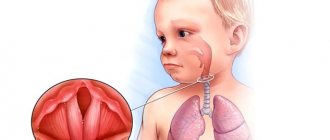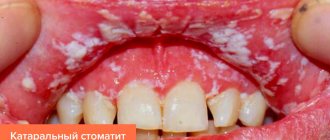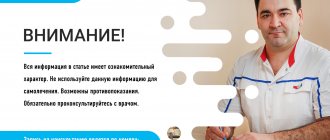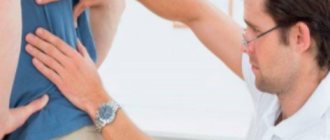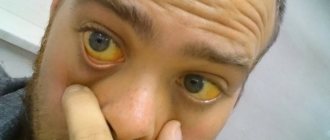Scoliosis is a persistent lateral curvature of the spine.
When considering the position of the human body in space, the basic position is considered to be a standing position with arms down. The human body has bilateral symmetry. You can draw a conditional plane separating the front part of the body from the back (this plane is called the frontal plane). Considering a person in this plane, we will see that the right and left sides of a person are symmetrical. The spine will be the axis of symmetry. If it is bent to the right or left, the symmetry will be broken. Therefore, scoliosis is also called curvature of the spine in the frontal plane.
Scoliosis should be distinguished from poor posture. Poor posture is a functional condition, the lack of habit of keeping your back straight. In this case, a person, if he wants, can straighten up. Curvature of the spine is changes that a person can no longer eliminate by simply changing his posture. Such changes are recorded during instrumental studies, for example, radiography or MSCT of the spine.
Types and degrees of scoliosis
If you look at a person from the back, then the spine should normally be located strictly in a vertical straight line. When the spine is curvatured, an arch occurs. If the arch is directed to the right, they speak of right-sided scoliosis
, if to the left, then about
left-handed
.
Scoliosis is also determined by the part of the spine in which the curvature occurs. Highlight:
- cervicothoracic
or
upper thoracic scoliosis
(curvature at the level of IV-V thoracic vertebrae). This scoliosis is characterized by the occurrence of asymmetry of the shoulders; - thoracic scoliosis
(curvature at the level of VII-IX thoracic vertebrae). Deformation of the chest occurs, causing respiratory dysfunction; - thoracolumbar scoliosis
(curvature at the level of the X-XII thoracic vertebrae). Leads to serious impairment of respiratory function and cardiovascular system activity; - lumbar scoliosis
(involving the lower thoracic vertebrae and the first vertebrae of the lumbar spine).
Left without proper treatment, the disease usually progresses, which is reflected in an increase in the angle of curvature. There are the following degrees of scoliosis:
- scoliosis of the 1st degree – curvature angle up to 10 degrees;
- scoliosis of the second degree – the angle of curvature is from 10 to 25 degrees;
- III degree scoliosis – 25-40°;
- IV degree scoliosis – curvature angle greater than 40 degrees.
There can be only one lateral curve, and then the curvature resembles the letter C. This type of disease is called C-shaped scoliosis
.
A misalignment to one side significantly increases the load on the vertebrae, and in order to reduce it, a curvature of another part of the spine develops in the opposite direction. In this case, the curvature resembles the letter S. This type of disease is called combined scoliosis
or
S-shaped scoliosis
.
In some cases, there may even be three arcs of curvature ( E-shaped
or
sigma-shaped
scoliosis).
Preventive measures
There are no clear measures to prevent scoliosis, since sometimes the pathology manifests itself for an unknown reason.
Firstly , you should monitor your posture: injuries to the spinal discs are reduced with the habit of standing straight, sitting and walking correctly.
Secondly, an active lifestyle, in which proper muscle function occurs, is effective in preventing scoliosis.
Thirdly , it is important to remember about sleep hygiene. An elastic orthopedic mattress will help to achieve the correct position of the spine during sleep and minimize the load on it.
Causes of scoliosis
Scoliosis can be congenital or acquired. Congenital scoliosis is usually caused by abnormalities in the development of the vertebrae and ribs.
Acquired scoliosis in most cases develops in childhood or adolescence, when the body is actively growing. Basically, these are ages from 6 to 17 years. Bone growth ends before the age of 20, after which the development of scoliosis is less likely. In 80% of cases, scoliosis is detected in girls.
Scoliosis can be of myopathic origin, that is, it occurs due to insufficiency of the muscular and ligamentous apparatus. The development of such scoliosis is facilitated by long-term uneven loads on the spine: the habit of a lopsided posture at a desk or desk, carrying a bag in the same hand (on one shoulder), playing sports associated with the work of only one hand (tennis, badminton, shot throwing). and so on.).
The following diseases can lead to the development of scoliosis:
- rickets (impaired mineralization of bone tissue). Rachitic scoliosis; discovered, as a rule, at the age of 2-3 years;
- congenital torticollis (the disease is characterized by a constant tilt of the head to the right or left);
- cerebral palsy (CP);
- polio;
- osteochondrosis;
- intervertebral disc herniation;
- and also some others.
However, in most cases the cause cannot be identified. This type of scoliosis is called idiopathic. The hereditary factor appears to be of great importance, since scoliosis is quite often detected in members of the same family.
Treatment of scoliosis without blade surgery
If a child is diagnosed with scoliosis, treatment begins immediately. But it can be carried out using conservative methods, that is, non-surgically, only for deformities less than 40°. In other cases, and especially with grade 4 scoliosis, surgical treatment of scoliosis is indicated.
So, if the disease is diagnosed in the early stages of development and it is still possible to restore the normal axis of the spine without direct intervention in it, the patient is prescribed complex therapy. Its character directly depends on the degree of scoliosis and the child’s well-being. In general, conservative treatment for scoliosis may include:
- exercise therapy;
- manual therapy;
- massage;
- physiotherapy;
- wearing an orthopedic corset;
- kinesio taping.
With grades 1 and 2 of scoliosis (most often observed in children under 5 years of age), only exercise therapy, massage and manual therapy are often sufficient. But other methods can also be used to increase the effectiveness of treatment. In more complex cases, doctors definitely recommend using all possible methods of aligning the spinal axis. Otherwise, the deformity will progress and sooner or later lead to severe complications, severe pain and an urgent need for surgery.
Scoliosis in adolescence is much more difficult to treat than in an earlier period. This is due to the spine not being as flexible as in younger children. Moreover, adolescents are often diagnosed with 2-3 degree curvature of the spine, which is accompanied by more pronounced changes in its axis and requires decisive action to eliminate the pathology.
Exercise therapy (therapeutic physical education)
Physical therapy plays a large role in correcting spinal deformities. For each patient, a set of exercises is developed individually based on the location, stage, and type of scoliosis. The child’s age and level of physical development are also taken into account.
Exercise therapy is required regularly. The first classes are conducted under the guidance of a specialist, and only later, when both the child and his parents have fully mastered the correct technique for performing each exercise, are they allowed to practice at home independently.
Regular physical therapy exercises help strengthen the muscle corset, which allows you to create reliable support for the spine and reduce the likelihood of its further curvature. Also, properly selected exercises can reduce pain and increase the possible range of movements.
Manual therapy
Manual therapy plays a huge role in the treatment of scoliosis in children. It is this method that allows you to directly influence the spine, normalizing the position of the vertebrae and releasing the pinched spinal roots. But such manipulations require a high level of qualification from a chiropractor, so you can only trust the child’s health to an experienced specialist.
Additionally, manual therapy makes it possible to eliminate functional blocks and normalize the tone of the back muscles. Also, local effects on soft tissues provoke increased blood circulation and an increase in metabolic rate.
After the first sessions, there is usually a significant improvement in the child’s well-being. The pain gradually goes away, neurological disorders are eliminated, memory and the ability to concentrate improve. But to obtain pronounced results and consolidate them, you need to undergo at least 10 sessions, and subsequently undergo preventive courses.
One of the effective methods of manual treatment of scoliosis in children is the Gritsenko method. It is based on the ability of the human body to recover independently when negative factors are eliminated, which, in combination with the high plasticity of the children’s spine, allows one to achieve maximum results.
Physiotherapy
Physiotherapeutic procedures are aimed at improving blood circulation and activating metabolic processes. They help normalize the contractile functions of the muscles and thereby reduce muscular dystrophy on one side of the back, as well as relieve increased tone from the muscles of the other half of the back.
Wearing an orthopedic corset
Special corrective corsets are prescribed for children with stage 2-3 scoliosis. They have different degrees of rigidity, which is selected depending on the severity of the pathology. Wearing an orthopedic corset can reduce the load on the spine and achieve postural alignment. This eliminates the risk of further progression of the deformity and reduces pain.
Often, orthopedic corsets are prescribed for children over 7-10 years of age.
Kinesio taping
Kinesio taping is a relatively new technique used to treat scoliosis. Its essence consists of gluing elastic bands called tapes to certain areas of the back. They help reduce the load on the necessary back muscles and reduce pain. At the same time, tapes do not hinder movements and are completely invisible under clothing.
Symptoms of scoliosis
Scoliosis in most cases develops in childhood and adolescence, and at the initial stage does not cause serious concern - children do not complain. Therefore, parents need to be especially careful and pay attention to external signs of the onset of the disease, such as:
- slouch;
- one shoulder is located slightly higher than the other.
The development of scoliosis leads to an increase in the angle of curvature. The vertebrae also begin to rotate around their axis (vertebral torsion). In this case, symptoms such as:
Backache
At the initial stage of scoliosis, back pain appears after a long period of standing or long walking. Subsequently, back pain becomes constant; after having to stand or walk, the pain intensifies;.
Body asymmetry
During a medical examination of a patient with scoliosis, it is discovered that one shoulder blade is higher than the other. In this case, the shoulder blades are located at different distances from the spinal column. In the later stages of scoliosis, the curvature of the spine becomes obvious: one shoulder is noticeably higher than the other. When you slowly bend forward on your back, an asymmetrical roll appears in the thoracic or lumbar spine - this is how torsion (twisting of the vertebrae) manifests itself.
Prevention
It is within the power of every parent to prevent spinal curvature in a child. But this requires monitoring the child’s posture from a very early age and paying great attention to the balance of his diet. In general, scoliosis prevention is as follows:
- The child should always keep his back straight when walking and sitting;
- from an early age it is recommended to start swimming, gymnastics, and dancing, since these sports do not put a high load on the spine, but effectively strengthen the back muscles;
- the child needs to buy a moderately hard orthopedic mattress;
- it is important to avoid prolonged sitting at the computer and smartphone (especially important for teenagers);
- if a child cannot independently monitor his posture, you can purchase a special corset that will help him maintain the correct body position when sitting at a desk at school (on the recommendation of a doctor).
Thus, childhood scoliosis is a common, but quite dangerous problem that requires the earliest possible diagnosis and careful attention to oneself. Therefore, it is worth regularly undergoing preventive examinations and independently monitoring the condition of your child’s back. And if, nevertheless, it was not possible to avoid the development of the disease, it is necessary to contact a vertebrologist, orthopedist or neurologist as soon as possible and undergo the prescribed course of treatment. Then, with a high degree of probability, scoliosis will be overcome and the development of severe complications will be prevented.
5 2 votes
Article rating
Methods for diagnosing scoliosis
In the diagnosis of scoliosis, instrumental research methods are of great importance. Typically, radiography is performed. In some cases, an MRI may be required.
X-ray of the spine
An X-ray of the spine allows you to see the location of the vertebrae, determine the angle of curvature, and in some cases identify the cause of scoliosis (vertebral fusion, wedge-shaped vertebra, etc.).
More information about the diagnostic method
MRI of the spine
The diagnosis of scoliosis can be made without resorting to an MRI. However, in complex cases, an MRI examination of the relevant parts of the spine will provide the doctor with the necessary additional information. MRI can detect spinal cord injuries and also detect spinal tumors, which sometimes cause scoliosis.
Sign up for diagnostics To accurately diagnose the disease, make an appointment with specialists from the Family Doctor network.
Forecast
In many cases, preventive examinations in schools allow cases of scoliosis to be detected early. This allows you to prescribe the necessary treatment and conduct dynamic monitoring of scoliosis, which sometimes makes it possible to avoid surgical treatment in the future. Most people with scoliosis can live full lives. Women with scoliosis are able to become pregnant and have children without much risk of complications. But at the same time, scoliosis can be a cause of lower back pain during pregnancy.
The latest advances in the field of surgery using minimally invasive techniques and materials allow us to expect that surgical treatment will become less traumatic over time with a shorter recovery period.
Surgery
Surgical intervention is indicated in particularly advanced situations when other methods of treating the spine have failed. Surgical treatment restores the natural shape of the spinal column and ensures the preservation of its growth.
Spinal fusion
Spinal fusion is a type of surgical intervention on the spine, which is aimed at immobilizing the vertebrae to relieve pain. During the operation, a special design is introduced, thanks to which individual segments of the spine grow together and lose mobility. A very effective procedure for pronounced painful manifestations of scoliosis.


